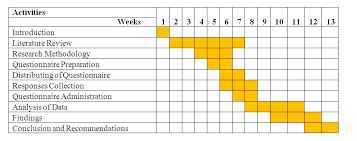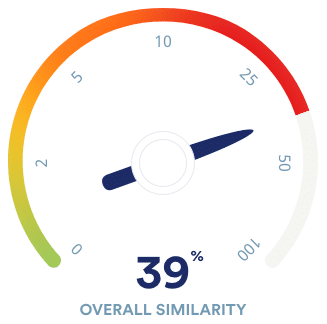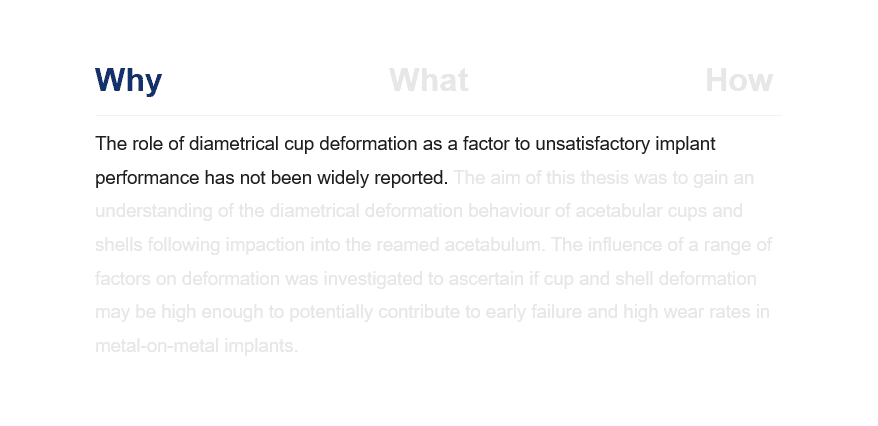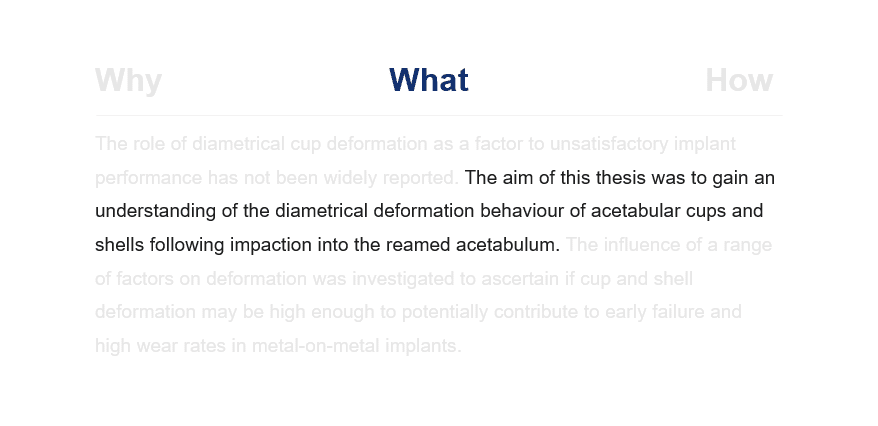
These are the main questions that you will be seeking to answer with the thesis. The questions should offer more focus and direction about the study you are proposing, and make the roadmap towards the targeted results. You might want to practice by learning how to write a thesis proposal sample. See the examples of thesis research questions:
The conclusion is the last part of your proposal. Here, you explain the anticipated results from the studies, especially the contributions to the knowledge base. See the example of a sample conclusion for a proposal below:
“What effect does daily use of Facebook have on the Attention span of adolescents?” “What effect do legal approaches have on people who drink and drive in the UK?”
Well, there is no standard formatting and citation method when it comes to writing proposals and thesis. However, your department will give the recommended formatting and citation style that students should use for their proposal.
Thesis Proposal Template

A thesis proposal requires comprehensive research, preparation, and a well-defined final destination. Here is a step-by-step guide to help you craft thee best proposal for your thesis.
“Pumpkins are crucial Jungian symbols used to indicate the desire of the subconscious mind to control and change the feeling of horror and fear of the people’s desire to understand the unknowable. This study will expand the field of pumpkinology, while fellowship with rats will further be expanded. This will herald a new era of plague-less companionship.”
“Noller (1980) comprehensively compared the effectiveness of women and men as nonverbal communicators. Being an effective communicator involves both encoding and decoding messages. Noller argued that women have a natural tendency to be more expressive. He added that men tend to make more errors than women when encoding messages.”

The content of a proposal for a thesis should consist of unique and topical information. It should not only consist of a description of scientific facts but from a careful, detailed analysis of these facts, examining examples of typical situations of their existence, discussing available alternatives and the reasons for choosing specific conclusions. In case you get lost in the sea of information, you can always use a master thesis writing service to ask how to write a thesis proposal and get help. You should remember that writing a dissertation excludes a subjective approach to studied facts. However, you can add certain subjective moments. These can be initiated by the author's creative individuality, his or her personal experience, passions, views, as well as historical, economic, social conditions in which a dissertation was created. Below, you will find more information on how to write a dissertation. There are many practical recommendations, nuances, and characteristics that should come in handy for every student who strives to prepare top-notch work.
Acquaintance with the topic literature of the dissertation begins with the development of the concept of research, which is reflected in the work plan and the research topic. There is an opportunity to purposefully conduct a search for sources and more deeply comprehend the material found.
The main idea here is to do as much as possible in the autumn semester. This way you will be freer in the spring when the university workload will be even greater.
After writing is finished, a student's work has not ended. It is very important to do a thorough proofreading and make changes where it is necessary, or even to ask for the help of your instructor. You should ask for help from your supervisor or get your thesis help or a special writing service you can find on the Internet.
Need to write a thesis ?
This university assignment should show the author's theoretical potential to his or her ability to interpret various theories and concepts, the ability to think creatively about the analyzed material, and a level of proficiency in specialized science terminology. A thesis proposal testifies to the author's experience in applying scientific methods and methods that are used in applied and fundamental sciences (social science, literature, history) and in understanding an application of pedagogical knowledge in practice. Every undergraduate should understand and know the difference between a thesis and dissertation.
It is necessary to compile a list of all literary sources and constantly supplement it. If the card file is made correctly, even with a cursory review of the titles of sources, you can cover a common theme and clarify your goals.
- Title page - first page, drafted according to strict rules.
- Abstract.
- Table of contents - headers with the indication of pages, a brief the contents. They should be without points at the end, last words of headers are connected to the page numbers with sharpeners, each title starts with a capital letter).
- Introduction - substantiation of the relevance of the topic. The identification of the problem and contradictions, formulation of the problem, the purpose, the object, the subject and the hypothesis of the research

Get some interesting ideas by referring to our compiled list of thesis topics.
The following is the primary purpose of writing a thesis proposal.
Cite all the primary and secondary sources in the reference list along with their codes. Also, choose a citation style after consulting with your professor.
It includes the review of the available literature on the topic to establish credibility. Keep in mind
What is a Thesis Proposal?

A good proposal will prove that your thesis or dissertation is relevant and important. Similarly, it shows that you have adopted the right approach and tools to solve the problem.
It provides a clear statement that briefly defines the purpose of the study.
It states the methodological approaches that will be used to achieve the objectives. It will also provide details about how the experiments will be conducted to test the hypothesis.
It is considered as a roadmap or a layout of your research study. Moreover, it also requires expert writing and research skills that many students may not have.

For practical research, focus on the concrete details of the situation:
Low voter turnout has been shown to have negative associations with social cohesion and civic engagement, and is becoming an area of increasing concern in many European democracies. When specific groups of citizens lack political representation, they are likely to become more excluded over time, leading to an erosion of trust in democratic institutions. Addressing this problem will have practical benefits for region X and contribute to understanding of this widespread phenomenon.
The aim is the overall purpose of your research. It is generally written in the infinitive form:
- What is already known about the problem?
- Is the problem limited to a certain time period or geographical area?
- How has the problem been defined and debated in the scholarly literature?
Practical research problems
In businesses and other organizations, writing a problem statement is an important step in improvement projects. A clearly defined and well-understood problem is crucial to finding and implementing effective solutions. In this case, the problem statement is usually a stand-alone document.
- How will resolving the problem advance understanding of the topic?
- What benefits will it have for future research?
- Does the problem have direct or indirect consequences for society?
Sometimes theoretical issues have clear practical consequences, but sometimes their relevance is less immediately obvious. To identify why the problem matters, ask:

This page describes what research aims and objectives are, how they differ from each other, how to write them correctly, and the common mistakes students make and how to avoid them. An example of a good aim and objectives from a past thesis has also been deconstructed to help your understanding.
Scroll through the image set below to see the ‘why, what and how’ associated with our research aim example.
To give an example, we have extracted the following research aim from a real PhD thesis:
Q: Is it achievable?
A: Yes, provided the student has access to a computer lab, modelling software and laboratory data.Introduction

A research aim is usually formulated as a broad statement of the main goal of the research and can range in length from a single sentence to a short paragraph. Although the exact format may vary according to preference, they should all describe why your research is needed (i.e. the context), what it sets out to accomplish (the actual aim) and, briefly, how it intends to accomplish it (overview of your objectives).
In addition to being SMART, your research objectives should start with a verb that helps communicate your intent. Common research verbs include:
Q: Is it timebound?
A: Yes, it is possible to create a limited-scope finite element model in a relatively short time, especially if you already have experience in modelling.
The next step is to outline your research questions. These should be relevant to the purpose of your study. Moreover, it will also help you discuss the problems that you seek to address.
How to Write a Good Thesis Introduction – Examples
MyPerfectWords.com is the best essay writing service available online. The professional writers have years of experience in writing a dissertation and a high-quality MS thesis. Thus, they guarantee to compose an interesting and plagiarism-free introduction for your thesis.
The first step to start a thesis introduction is by choosing an interesting topic. It should be introduced and defined well for the readers to understand.
Mention the Hypothesis

The following are some writing tips to help you draft perfect thesis introductions.
Review and evaluate the existing literature critically. It will help the researcher in finding and addressing the research gap.
A good introduction of the thesis always states the historical background of the chosen topic. It is usually cited in the first paragraph and shows the current position of the subject.
Here is a step by step guide for you to follow while writing a thesis introduction.
